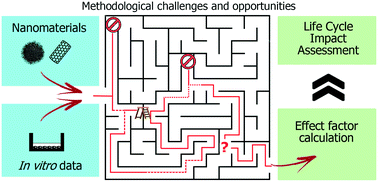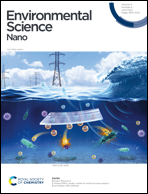In vitro-based human toxicity effect factors: challenges and opportunities for nanomaterial impact assessment
Abstract
The growing number of nanomaterials being produced represents a challenge for the assessment of their toxicity impacts in life cycle assessment (LCA). The human toxicity effect factor, indicating the population incidence risk caused by chemical exposure, is traditionally estimated from in vivo animal test data; however, this kind of study is being reduced in favor of in vitro testing. In this perspective, we identify the peculiarities of nanomaterials compared to chemicals, and how this affects, or should affect, the LCA toxicity characterization methodology within the life cycle impact assessment (LCIA) step. Then, we also discuss both the challenges and the opportunities of integrating in vitro data into LCIA, such as the scarcity of chronic in vitro experiments and avoiding inter-species extrapolation. Moreover, we show the acceptable uncertainty space for in vitro-derived toxicity effect factors for nanomaterials, based on the range of uncertainty of toxicity effect factors for chemicals. Last, we advocate that using in vivo data as a benchmark for the accuracy of derived human toxicity effect factors may in certain cases be misleading. While the adaptation of the LCIA toxicity characterization methodology for nanomaterials and in vitro data is not yet achieved, cross-discipline discussions are a fundamental step towards a successful integration of both new data sources and new substance types into LCIA.



 Please wait while we load your content...
Please wait while we load your content...